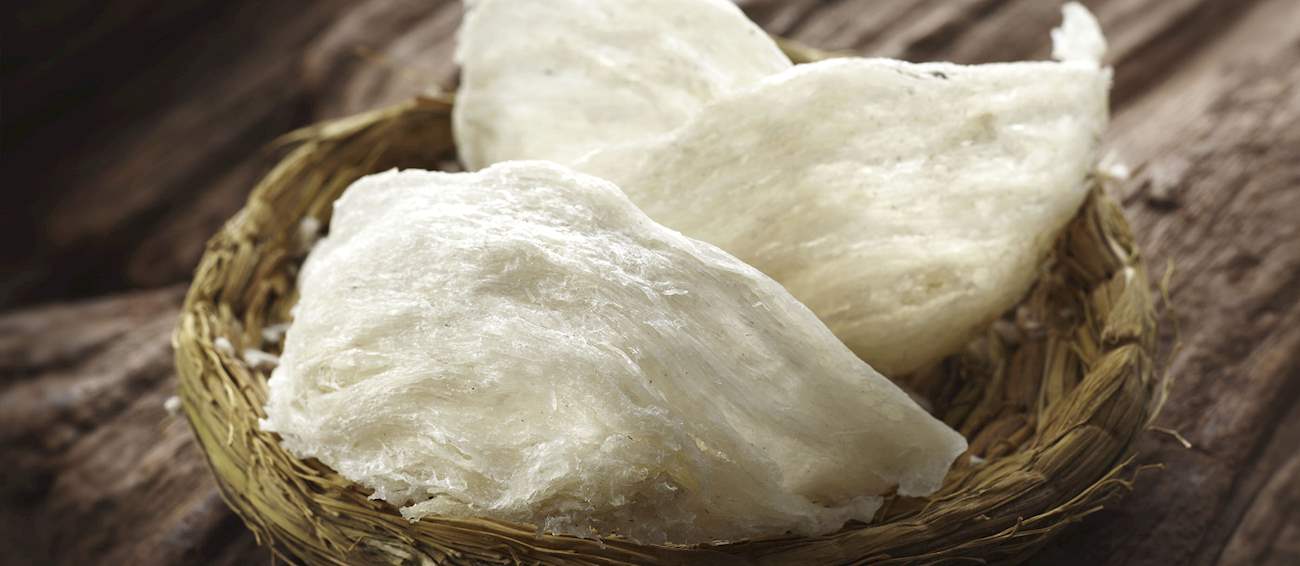Bird's nest soup (Yan Wo)
(Bird's nest soup, 燕窝, 燕窩)
Often called the caviar of the East, bird nests are an exquisite delicacy found in many Asian cuisines. In places like Hong Kong, where the demand for bird nests often outweighs the supply, their price reaches up to $10,000 for a single kilogram!
In China, consuming bird nests is a tradition dating back more than a thousand years, all the way to the Tang Dynasty era, circa 700 CE. Back then, bird nests were a delicacy reserved only for the aristocracy. It is believed that the famous Empress Wu Zetian - the only woman who ever ruled China - used to rely on anti-aging and restorative properties of the highly nutritious bird's nest soup, which was often found on the imperial menu. This peculiar dish is made from the nests of a few particular types of swiftlets, cave-dwelling birds indigenous to Southeastern Asia.
However, these nests have nothing to do with twigs, grass, or mud - they are almost entirely made of swiftlets' saliva and resemble the so-called Chinese vermicelli, translucent cellophane noodles. In fact, swiftlets' nests are used as pasta, except they need to be soaked in cold water before being cooked in chicken stock. According to traditional Chinese medicine, bird's nest soup provides numerous health benefits.
It aids digestion, strengthens the immune system, deeply nourishes the body, restores energy, boosts stamina, and invigorates one's qi - vital energy. Also, in some Asian cultures, bird's nest soup is considered to be a powerful aphrodisiac, which could quite possibly be its biggest selling point and the main reason why people are more than willing to pay up to $100 for a bowl of this Chinese superfood.




